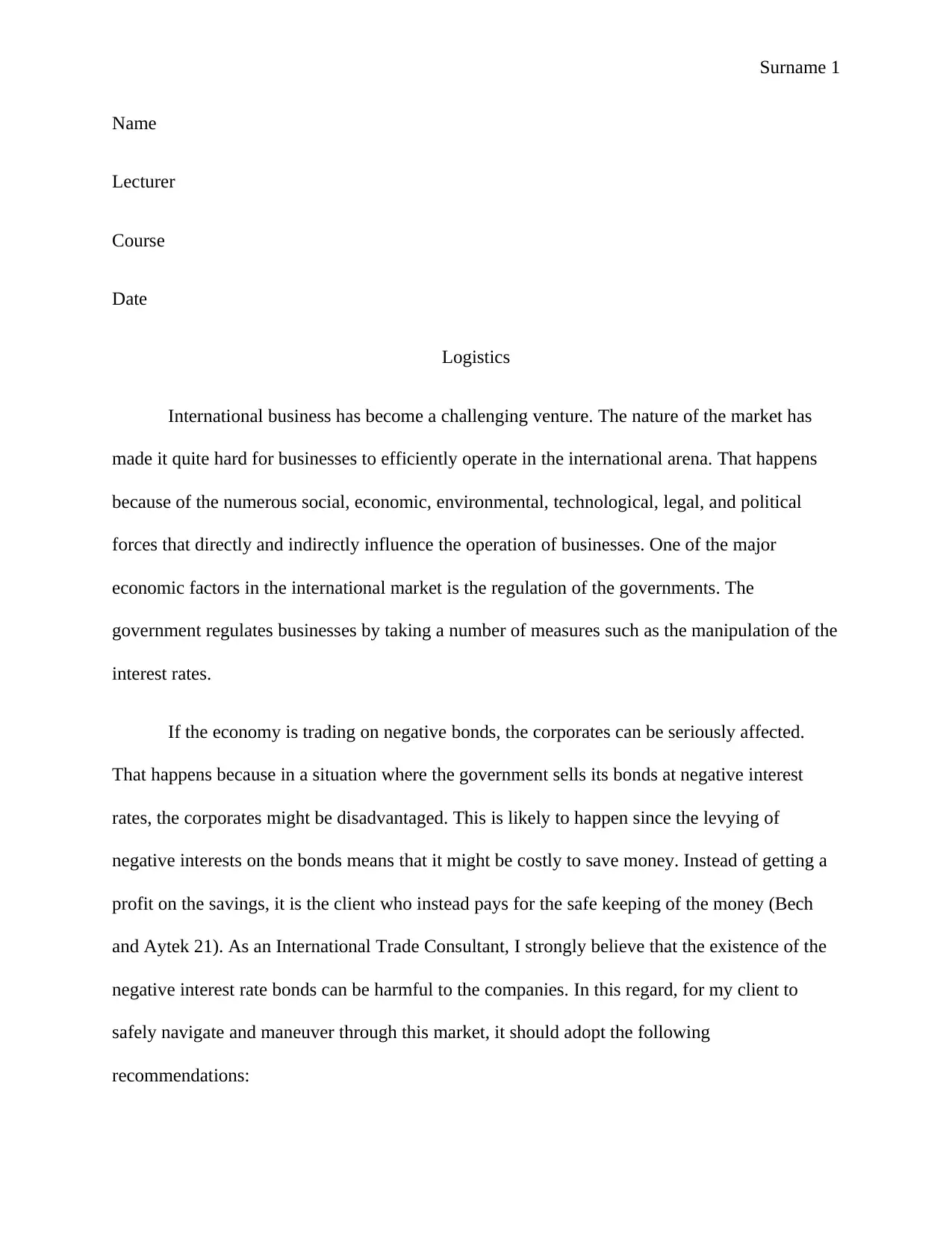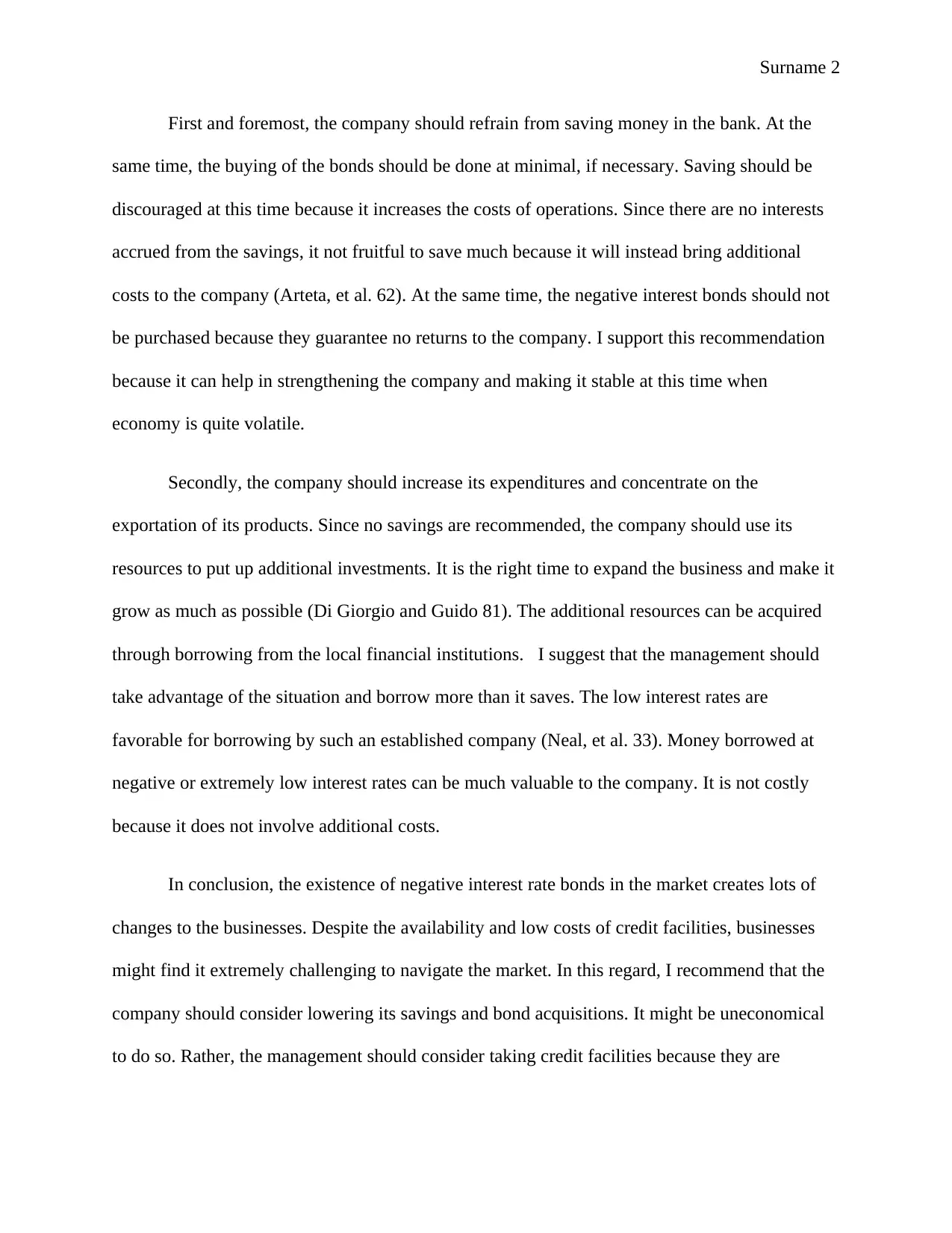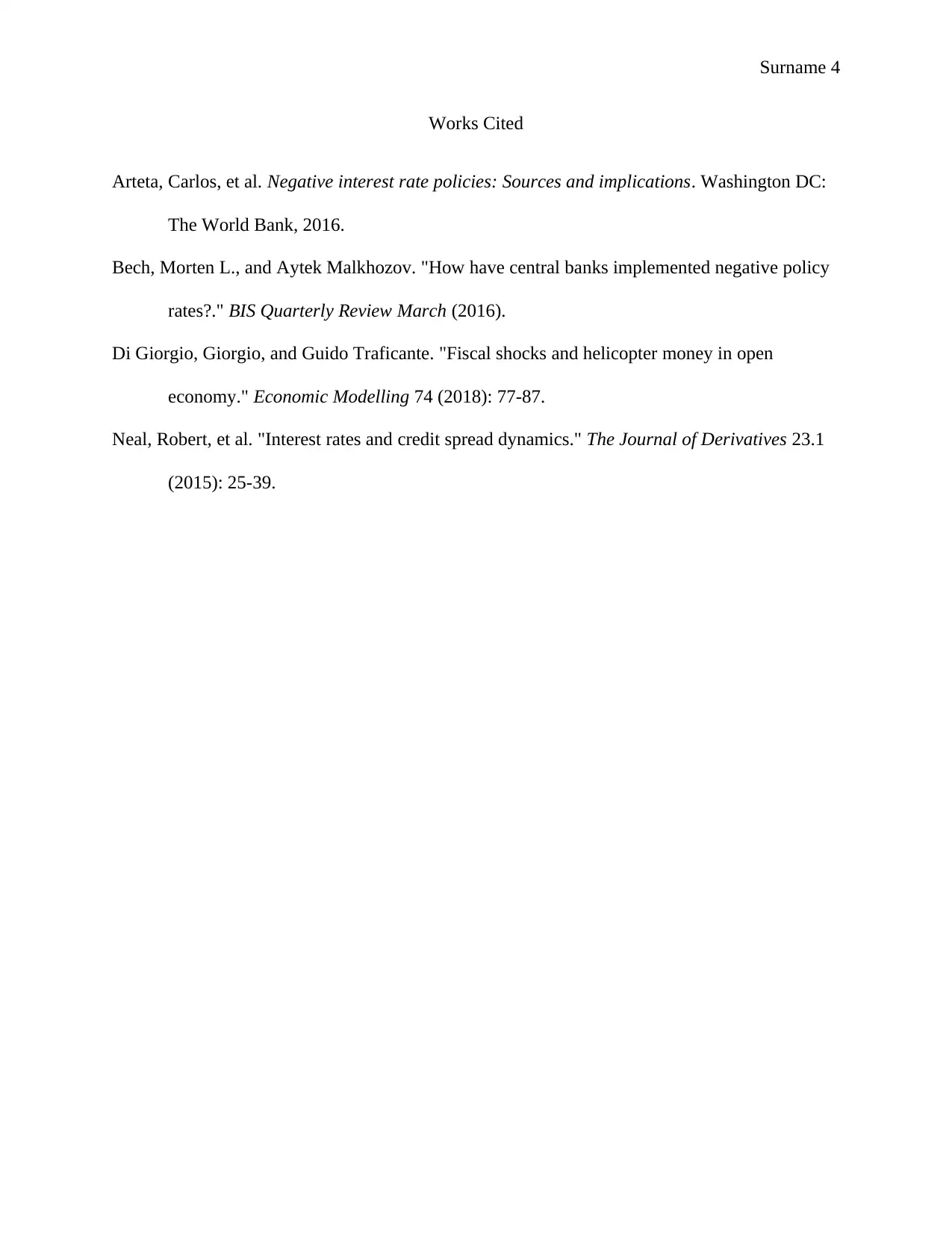International Business Finance: Negative Interest Rate Impact Analysis
VerifiedAdded on 2022/10/06
|4
|727
|53
Report
AI Summary
This report examines the impact of negative interest rates on international businesses, providing insights into the challenges and opportunities these rates present. The report highlights how negative interest rates, such as those seen in bond markets, can affect corporate financial strategies. It emphasizes the importance of minimizing savings and avoiding negative-yield bonds, recommending instead the expansion of business operations through increased investment and borrowing from local financial institutions. The author suggests that companies should leverage low interest rates to expand their businesses and take advantage of the available credit facilities. The report concludes with recommendations for businesses to adapt to the volatile market conditions and maximize opportunities. The work cited includes academic research on the topic.
1 out of 4










![[object Object]](/_next/static/media/star-bottom.7253800d.svg)